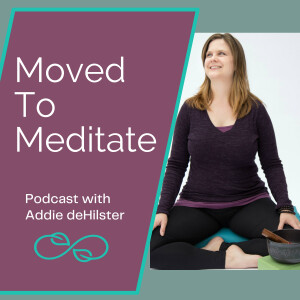
Alignment in Yoga and Mindful Movement (Excerpt from my book)
 2024-05-23
2024-05-23
What is the role of alignment in Yoga? Is technique always the best route to safety in Mindful Movement? In this episode of the podcast, I’m sharing my take on these important (and big) topics through another excerpt from the book I’m writing.
The working title of my book is Teaching Mindful Movement, and here you’ll be hearing a section where I reflect on what it means to teach movements responsibly. We will address the issues of technique and alignment, the role of the teacher, and how mindfulness can support safety.
We train as movement teachers because we want to help people feel better in their bodies. The last thing we want is to unintentionally cause harm through the practices we guide. However, my best advice for teaching safely might not be what you think.
In my time in this field, I’ve observed a trend for Yoga and movement teachers to take on a lot of responsibility for “keeping people safe.” This desire to ensure safety takes various forms: some undertake detailed studies of anatomy and biomechanics, or mastering the skillful use of props, while others may emphasize ideals of Yoga alignment, or the precise execution of forms in Qigong. Some of the Somatic movement styles put a great deal of focus on achieving “correct” posture, as defined by the prevailing theories in their school.
For quite a while in the Yoga world, structural alignment was considered the best means to ensure safety. But, as the teaching community has gradually learned more about the brain and nervous system, and has begun applying principles of tissue mechanics and pain science to Yoga, we can see that safety is much more multi-faceted than just positioning our bones and joints in a particular way. As we’ve become more aware of the range of differences between individual bodies, it has also become clear that there is no universal set of alignment standards that work for everyone.
You’ll hear about:
- how being overly focused on alignment can sometimes cause injuries, rather than prevent them
- ways that alignment and technique can become entangled with our cultural conditioning and take us further away from embodiment
- when studies of anatomy, physiology, and biomechanics are most helpful
- the value of choosing simple, low-risk movements that support mindfulness and that are natural extensions of our students’ existing daily movement repertoire
So, if technique is not our best guarantee of safety, then is there still value to giving instructions on precision and form? If we cue movements in a less prescriptive way, will our classes become a sloppy free-for-all that leaves our students wondering what they are even doing?
I will give some examples of how teachers can provide enough structure and clarity for students, while also allowing space for individual needs. We will explore a “middle way” with alignment in which technical cues can be used as a form of mindful inquiry, rather than rules to be followed.
I hope the perspective I offer here will help you feel more empowered in your teaching, and that it will relieve some of the pressure of thinking you need to have all the answers to keep your students safe!
If you have feedback to share after hearing this section of the book, please contact me. I would love to know what you find intriguing, challenging, or helpful.
And, if you’d like to be notified when my book Teaching Mindful Movement is ready, sign up for updates here!
-----------
For more links and resources mentioned in this episode, find the show notes at movedtomeditate.yoga/podcast.
Find more info about the donation-based Teacher Masterclasses at movedtomeditate.yoga/teacher-masterclasses.
Get the dates for the next Mindful Movement Teacher Training at movedtomeditate.yoga/mmtt.
Feel free to reach out through my website with any episode requests, topics you'd like to hear about, or guest interview suggestions. You can also connect with me on Instagram or Threads at @addie_movedtomeditate (for mindfulness, movement, pictures of Pacific Northwest nature, crocheting projects, and my adorable kitty, Mustache).
More Episodes
 2023-03-09
2023-03-09
 2023-02-16
2023-02-16
 2023-01-05
2023-01-05
 2022-12-15
2022-12-15
 2022-11-10
2022-11-10
 2022-10-13
2022-10-13
Create your
podcast in
minutes
- Full-featured podcast site
- Unlimited storage and bandwidth
- Comprehensive podcast stats
- Distribute to Apple Podcasts, Spotify, and more
- Make money with your podcast
It is Free
- Privacy Policy
- Cookie Policy
- Terms of Use
- Consent Preferences
- Copyright © 2015-2024 Podbean.com





